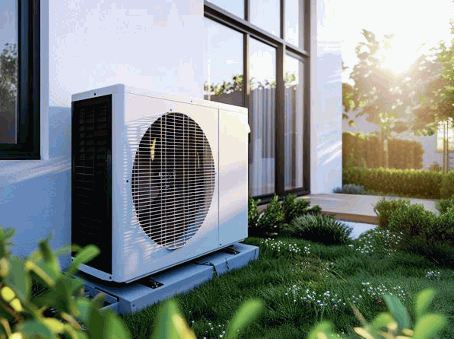Air source heat pumps are gaining significant popularity as a sustainable and efficient heating solution for residential properties. This article examines the functionality and operational principles of air source heat pumps, emphasizing their numerous advantages, including energy efficiency and cost savings. Furthermore, it provides a detailed analysis of the various costs associated with installation and maintenance, along with the factors that may influence these expenditures, such as the involvement of HVAC professionals and the impact of federal tax credits. Additionally, readers will find information on potential government incentives and guidance on selecting the most suitable heat pump to meet their specific requirements.
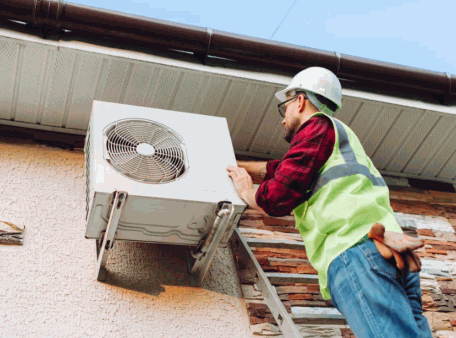
What Is An Air Source Heat Pump?
An Air Source Heat Pump (ASHP) represents an innovative and efficient heating solution that harnesses ambient heat from outside air for both heating and cooling applications. This system is particularly well-suited for homeowners in diverse climatic regions across the United States.
By employing advanced heat transfer technology, an ASHP can substantially improve the performance of an existing heating and air conditioning system, ensuring consistent comfort throughout the seasons while decreasing dependence on conventional heating methods, such as gas or oil furnaces. This heating air conditioning integration makes it a versatile choice for diverse climatic regions across the United States.
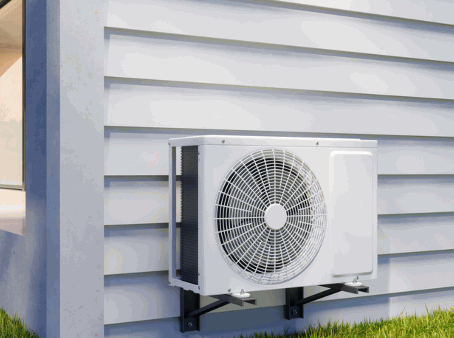
How Does An Air Source Heat Pump Work?
An Air Source Heat Pump operates by transferring heat from the outside air into the home during the winter months and, conversely, expelling heat from the home during the summer. This dual functionality renders it an optimal energy-efficient choice for households seeking to enhance comfort throughout the year.
The process begins with the circulation of refrigerant within a closed-loop system, which absorbs heat from the ambient air outside, even under colder conditions. This refrigerant, engineered to evaporate at low temperatures, enters the evaporator coil, where it transitions from a liquid to a gas as it absorbs heat.
Subsequently, the compressor increases the pressure and temperature of the gas, enabling it to flow through the condenser coils located inside the home, where it releases the absorbed heat, thus warming the indoor air. This process exemplifies the efficiency of heating seasonal performance metrics that contribute to energy savings and environmental initiatives.
- In the summer, the cycle is reversed.
- The refrigerant extracts heat from the indoor air, effectively cooling the home.
This technology adeptly adapts to varying environmental temperatures, maintaining efficiency ratings of up to 300% during moderate weather. This further underscores the effectiveness of utilizing outside air heat, regardless of climatic challenges.
Take a look: What Is Ground Source Heat Pump Used For
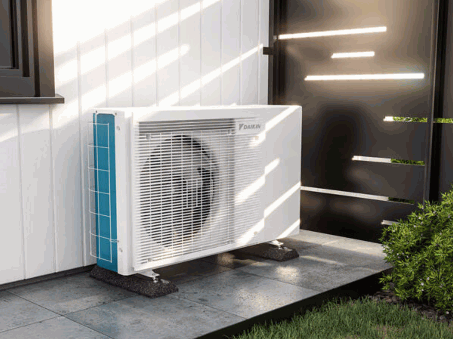
What Are The Benefits Of An Air Source Heat Pump?
Air Source Heat Pumps offer a variety of advantages that position them as a preferred solution for various heating and cooling requirements. These benefits include enhanced energy efficiency, significant cost savings, and environmental sustainability, establishing them as a cost-effective heating option for both residential and commercial applications. This efficient heating system leverages heat transfer air technology to reduce dependency on traditional heating systems like gas oil furnaces.
Energy Efficiency
One of the key features of an Air Source Heat Pump is its exceptional energy efficiency, as demonstrated by high Seasonal Energy Efficiency Ratio (SEER) ratings. These ratings reflect the system’s effectiveness in utilizing energy for heating and cooling purposes. This high level of efficiency not only ensures optimal comfort throughout the year but also presents a significant opportunity for homeowners to substantially reduce their environmental footprint.
By investing in a heat pump that possesses an Energy Star certification, consumers can achieve enhanced savings on their energy bills. This certification serves as a reliable benchmark for assessing the system’s performance and energy efficiency, thereby assisting homeowners in making informed decisions regarding their energy systems.
- Such heat pumps typically utilize less electricity, resulting in considerable cost savings over time.
- The initial investment in an efficient unit yields benefits through reduced monthly utility bills, allowing energy savings to accumulate over the years.
- Choosing models with higher efficiency ratings may also enable homeowners to qualify for energy rebates and incentives, further lowering overall expenditure.
Understanding the correlation between energy efficiency ratings and long-term savings enables homeowners to make decisions that positively affect both their financial situation and the environment.
Cost Savings
Investing in an Air Source Heat Pump allows homeowners to realize significant cost savings, not only through lower energy bills but also by taking advantage of federal tax credits aimed at promoting the adoption of energy-efficient technologies.
The appeal of these systems lies in their ability to improve the overall efficiency of heating and cooling processes within the home. By adopting these advanced technologies, consumers can anticipate not only a reduction in immediate expenses but also substantial decreases in long-term operational costs.
The long-term benefits become particularly evident as homeowners observe a decline in utility bills throughout the lifespan of the pump, which typically exceeds 15 years.
The installation of a heat pump necessitates an initial investment; however, it is essential to consider the following factors:
- Annual maintenance conducted by HVAC professionals is critical to ensuring optimal performance and can significantly influence future savings.
- As professionals fine-tune systems during seasonal inspections, they can identify potential efficiency losses and help mitigate long-term repair costs.
By actively engaging with qualified HVAC technicians, homeowners can leverage their expertise to maximize both functionality and energy performance, ultimately leading to enhanced savings that can be appreciated year after year.
Environmentally Friendly
Air Source Heat Pumps represent an environmentally responsible alternative, as they significantly reduce greenhouse gas emissions when compared to conventional heating systems, thereby contributing to energy savings and environmental protection initiatives.
These systems are capable of extracting heat from the external environment, even in lower temperatures, while utilizing less electricity to maintain comfortable indoor conditions. This efficiency is made possible through refrigerant circulating unit designs that optimize energy-efficient means for heating and cooling needs. This functionality not only decreases dependence on fossil fuels but also aligns with recent regulations designed to mitigate carbon emissions and promote sustainability.
- The transition to heat pumps supports global efforts to minimize the impacts of climate change.
- Numerous governments provide incentives for homeowners and businesses to adopt this technology, thereby facilitating a transition away from traditional gas or oil heating systems.
In conclusion, the adoption of air-source heat pumps fosters a cleaner environment and a sustainable future, positioning them as a prudent choice for those who prioritize both cost-effectiveness and environmental integrity.
Versatility
The versatility of Air Source Heat Pumps (ASHPs) enables them to be configured as either ducted air source systems or ductless mini-splits, making them suitable for various home layouts and heating and cooling requirements.
Ductless mini-splits, in particular, are ideal for homeowners lacking existing ductwork, as they provide a flexible installation option that can be seamlessly integrated into almost any space. This system employs an outdoor condenser paired with one or more indoor air-handling units, delivering efficient heating and cooling without necessitating extensive renovations. These systems not only consume less energy but also offer several advantages, including:
- Individual room temperature control
- Reduced installation costs
- Quieter operation
These features enhance overall convenience.
Conversely, for larger homes or buildings, ducted systems offer a practical solution by circulating air through a network of ducts, ensuring that each room receives adequate heating and cooling distribution. This ducted air source configuration is adaptable to various layouts, further showcasing the heating-cooling versatility of Air Source Heat Pumps. These configurations can be tailored based on the layout of the home, further demonstrating the adaptability of ASHPs in diverse environments.
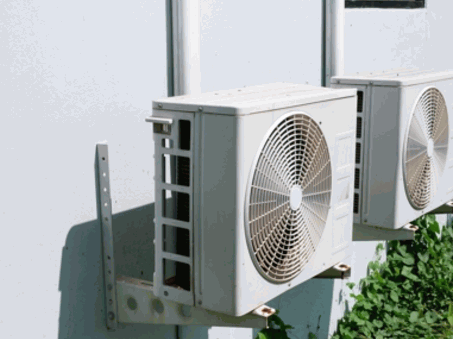
How Much Does An Air Source Heat Pump Cost?
The cost of an Air Source Heat Pump can vary significantly based on several factors. These include the initial purchase price of the unit, installation expenses, ongoing operational costs, and projected maintenance costs throughout its lifespan. Climate region factors and HVAC professionals’ cost assessments also play a crucial role in determining the overall investment.
Initial Cost
The initial cost of an Air Source Heat Pump can range from several thousand dollars to over $10,000, depending on the specific model, its energy-efficient features, and the recommendations provided by HVAC professionals.
Several key factors significantly influence this pricing structure. The brand often plays a crucial role; well-established manufacturers such as Trane or Lennox may command higher prices due to their reputation for reliability and performance. The size of the unit is essential, as larger systems designed to heat or cool more expansive spaces typically incur higher costs. Additionally, the technology employed, such as inverter technology that enhances efficiency, can also contribute to an increase in price.
Example Models and Pricing:
- Goodman GSZ14: Approximately $3,800, offering solid efficiency.
- Trane XV20i: Prices may exceed $10,000 due to advanced features.
Understanding these variables enables consumers to make informed decisions, effectively balancing between upfront costs and long-term savings.
Installation Costs
The installation costs for an Air Source Heat Pump can significantly influence the overall budget, with variations based on local labor rates, climate region factors, and the complexity of the heat pump installation process. Consulting with HVAC professionals can provide an accurate estimate of these costs.
These costs may fluctuate across different regions. For example, urban areas may experience higher prices due to increased demand for skilled labor. Conversely, regions with milder climates may have lower installation rates, as fewer specialized systems are required.
Engaging qualified HVAC professionals is essential, as they ensure the system operates efficiently and complies with local building codes, which can impact the final cost. It is important to understand the specific regulations in your area, as different jurisdictions may impose varying requirements and fees.
- Labor rates can vary significantly across different regions.
- Climate-specific factors can influence the type of system required.
- Qualified professionals are adept at navigating local regulations and codes effectively.
Therefore, prospective homeowners should obtain multiple quotes from local HVAC specialists to ensure comprehensive and competitive pricing.
Operating Costs
Operating costs for an Air Source Heat Pump are generally lower than those associated with traditional heating systems, primarily due to their energy-efficient method of providing heating and cooling throughout the year.
When evaluating the total operating costs, it is crucial to consider several factors that contribute to overall expenses. Notably, energy consumption plays a significant role, as these systems utilize electricity to transfer heat rather than generating it through combustion.
Maintenance requirements for heat pumps are typically less intensive, which results in lower labor and parts costs. Although seasonal performance may vary, heat pumps generally operate at a higher efficiency rating compared to gas or oil-based heating systems.
- For instance, a study indicated that homeowners could achieve energy savings of up to 30% annually by transitioning to a heat pump.
- Furthermore, when comparing installation costs with long-term energy savings, the financial implications of this decision become even more favorable.
This not only underscores the sustainability of utilizing such systems but also highlights their attractiveness in terms of reducing utility bills over time.
Maintenance Costs
Regular maintenance is essential for the optimal performance of an Air Source Heat Pump. While maintenance costs may vary, investing in professional services can prevent larger, more expensive repairs in the future.
To ensure the longevity and efficiency of the system, routine maintenance is not merely advisable but imperative. This process typically encompasses various tasks, including:
- Changing filters to maintain proper airflow and indoor air quality.
- Conducting system checks to identify inefficiencies or potential issues before they escalate.
- Cleaning components to enhance performance and reduce strain on the system.
Engaging HVAC professionals introduces a level of expertise that extends beyond basic upkeep. These specialists not only possess the technical knowledge necessary to address issues effectively, but they can also identify subtleties that the average homeowner may overlook.
Adopting a proactive approach to maintenance is crucial for ensuring that the system operates efficiently and reliably, ultimately providing peace of mind and comfort over time.
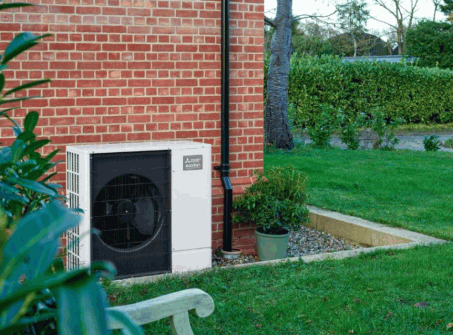
What Factors Affect The Cost Of An Air Source Heat Pump?
Several factors can significantly affect the overall cost of an Air Source Heat Pump. These factors include:
- the size and capacity of the unit,
- its energy efficiency rating,
- the installation location,
- any additional features that may be included with the system.
Size And Capacity
The size and capacity of an Air Source Heat Pump, often measured in British Thermal Units (BTUs), are critical factors to consider, as selecting a unit that is insufficiently sized may not adequately meet heating and cooling requirements, while an oversized unit can result in inefficient operation.
To ensure optimal performance, it is essential to accurately size a heat pump for any specific residence. Factors such as the home’s square footage, insulation quality, and local climate are pivotal in determining the appropriate capacity. Proper sizing not only enhances energy efficiency but also contributes to a comfortable living environment.
Homeowners should begin by considering the following:
- Evaluate the total square footage.
- Assess insulation levels in walls and ceilings.
- Factor in regional temperature fluctuations.
Neglecting to properly size the unit can lead to various adverse effects, including increased energy bills and inconsistent indoor temperatures, which ultimately undermine the effectiveness of heating and cooling systems.
Energy Efficiency Rating
The energy efficiency rating of an Air Source Heat Pump, commonly represented by its Seasonal Energy Efficiency Ratio (SEER) and Energy Star certification, is a critical factor in assessing its operational costs and overall effectiveness.
It is essential for homeowners to understand how these ratings are calculated in order to enhance their energy efficiency. The SEER is typically defined as the cooling output during a standard cooling season divided by the total electric energy input, providing a clear indication of performance over time. Higher ratings signify greater efficiency, which translates to reduced energy bills as the heat pump requires less energy to maintain comfortable indoor temperatures.
By selecting units with higher energy efficiency ratings, homeowners can realize substantial long-term savings. These savings are not only reflected in lower utility bills but also contribute to a diminished environmental impact, as more efficient units utilize less energy overall.
Key benefits of investing in energy-efficient heat pumps include:
- Long-term cost savings
- Reduced carbon footprint
- Potential eligibility for rebates
Ultimately, investing in a heat pump with a higher efficiency rating can lead to a more economical and sustainable solution for home heating.
Installation Location
The installation location of an Air Source Heat Pump significantly impacts both its performance and associated costs, with climate-related factors playing a crucial role in the system’s efficiency throughout the year.
It is essential to comprehend local climate conditions. For instance, regions that experience mild winters generally exhibit greater efficiency from heat pumps, as the temperature differential between indoor and outdoor environments is less pronounced. In contrast, colder regions, such as those in northern climates, may present challenges for heat pump operation, particularly when temperatures fall significantly. This can result in inefficiencies and increased operational costs.
Several factors warrant consideration:
- Temperature Range: Systems must effectively manage the varying temperatures encountered throughout the seasons.
- Humidity Levels: Elevated humidity can impact the unit’s ability to remove moisture from the air.
- Local Regulations: Different states may impose specific incentives or restrictions that influence installation and performance.
By taking these elements into account, stakeholders can ensure that their investment in a heat pump, whether it be an Air Source Heat Pump or a Geothermal Heat Pump, aligns not only with the initial purchase and installation costs but also with the anticipated long-term operational and maintenance expenses.
Additional Features
Additional features in an Air Source Heat Pump, including smart thermostats, variable speed compressors, options for ducted or ductless configurations, and the inclusion of energy-efficient means like inverter technology, can significantly influence both the overall cost and performance of the system.
These features not only enhance the efficiency of the system but also provide homeowners with increased control over their heating and cooling requirements. For example, smart thermostats facilitate remote management of temperature settings, allowing users to program their systems according to their daily routines, which can result in substantial energy savings.
Additionally, a variable speed compressor adjusts, much like a ductless mini split, its output to meet fluctuating demands, ensuring optimal comfort levels while reducing energy consumption during off-peak periods. The choice between ducted and ductless systems, including options like Ductless Mini Split, can considerably affect installation costs and the overall aesthetics of the home.
Homeowners should conduct a thorough assessment of their specific requirements—such as property size, the number of British Thermal Units required, insulation quality, and personal comfort preferences—when considering which features to incorporate.
- Evaluating energy efficiency ratings, such as the Seasonal Energy Efficiency Ratio, and operational costs over time is essential.
- Consulting with HVAC professionals can yield tailored recommendations, improving your understanding of cooling heating needs and other factors.
- Investigating available rebates or incentives for energy-efficient systems can also influence the decision.
By taking these factors into account, homeowners can make informed choices that enhance their living environment while optimizing their investment.
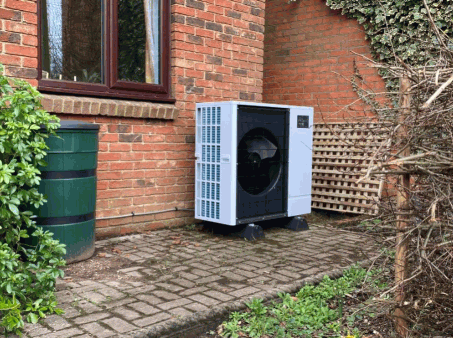
Are There Any Government Incentives For Purchasing An Air Source Heat Pump In The United States?
There are numerous government incentives available for homeowners who purchase an Air Source Heat Pump, including federal tax credits, often promoted by the Environmental Protection Agency, designed to encourage energy-efficient upgrades and promote environmental sustainability initiatives.
Homeowners aiming to improve their energy efficiency can benefit from various federal tax credits that significantly alleviate the financial burden associated with upgrading their heating systems. These programs not only reduce initial costs but also contribute to substantial energy savings over time.
To take advantage of these incentives, homeowners in the United States must be aware of specific eligibility requirements, which may include the type of heat pump installed and its Energy Star certification.
Eligible homeowners are required to provide proof of purchase. Applications for these incentives can typically be submitted online or through tax preparation professionals.
By taking these proactive measures, homeowners can enhance their residents’s comfort while making a commendable contribution to sustainability.
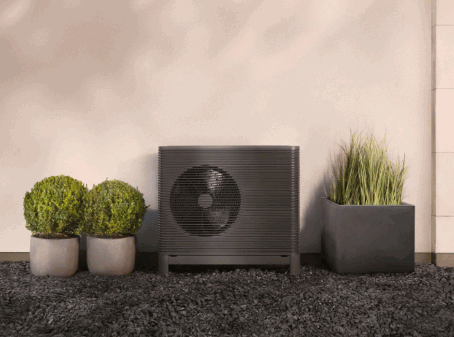
What Are The Long-Term Savings Of An Air Source Heat Pump?
Investing in an Air Source Heat Pump can result in significant long-term savings, particularly through reduced energy bills and lower maintenance costs, thereby establishing it as a cost-effective heating solution over time.
These systems operate by extracting heat from the outside air, even at low temperatures, which markedly enhances their energy efficiency. This efficiency results in decreased energy consumption when compared to traditional heating methods, leading to notable financial benefits. For example, statistics indicate that homeowners can save up to 50% on their heating bills after installation.
- Given that the average lifespan of an air source heat pump ranges from 15 to 20 years, the initial investment becomes increasingly worthwhile as time progresses.
- Recent case studies have revealed that households have experienced up to a 70% reduction in carbon emissions, thereby contributing not only to personal savings but also to environmental sustainability.
As energy prices continue to escalate, such investments are becoming essential for long-term financial planning, positioning air source heat pumps as a premier choice for eco-conscious homeowners.
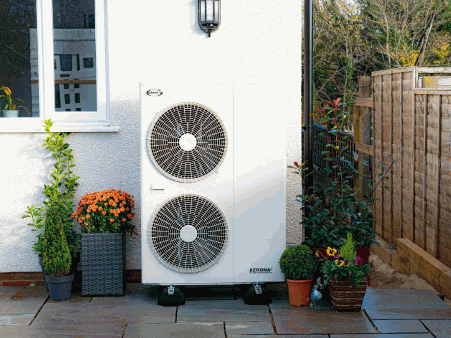
How To Choose The Right Air Source Heat Pump For Your Home with Guidance From HVAC Professionals?
Selecting the appropriate Air Source Heat Pump for a residence necessitates a careful assessment of several factors, including size and capacity, energy efficiency ratings, and consultation with HVAC professionals to guarantee optimal performance tailored to individual requirements.
To make an informed decision, homeowners should first take the time to comprehend their specific heating and cooling needs. This entails considering the square footage of the living space, the number of rooms, and the overall quality of insulation. A thorough evaluation of these parameters will facilitate improved energy efficiency and enhance comfort throughout the year.
- Consultation with experts, including those at HomeAdvisor and the Air Conditioning, Heating, and Refrigeration Institute, is essential, as they can provide valuable insights based on their experience, assisting homeowners in navigating the extensive array of available options.
- Homeowners should also accurately measure their home’s dimensions, ensuring both internal and external environments that the heat pump will service are accounted for.
- Understanding energy requirements is equally crucial; knowledge of the local climate and typical temperature variations will inform the selection process.
When evaluating various models, attention must be given to features such as noise levels, smart technology integration, warranty offerings, and specific brands like Trane, Carrier, American Standard, Rheem, and Bryant. This comprehensive approach ensures that the selected air source heat pump aligns with both functionality and efficiency expectations.
